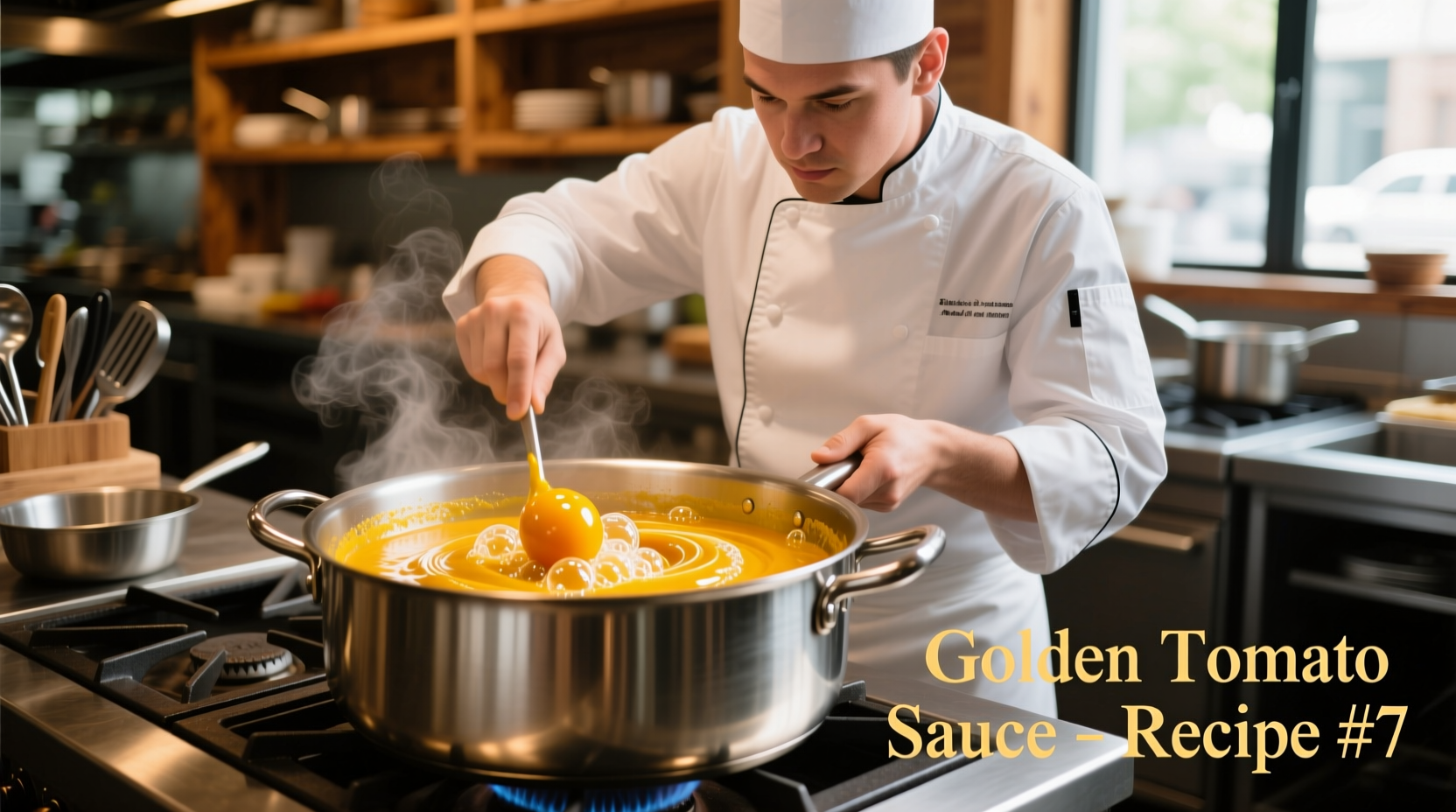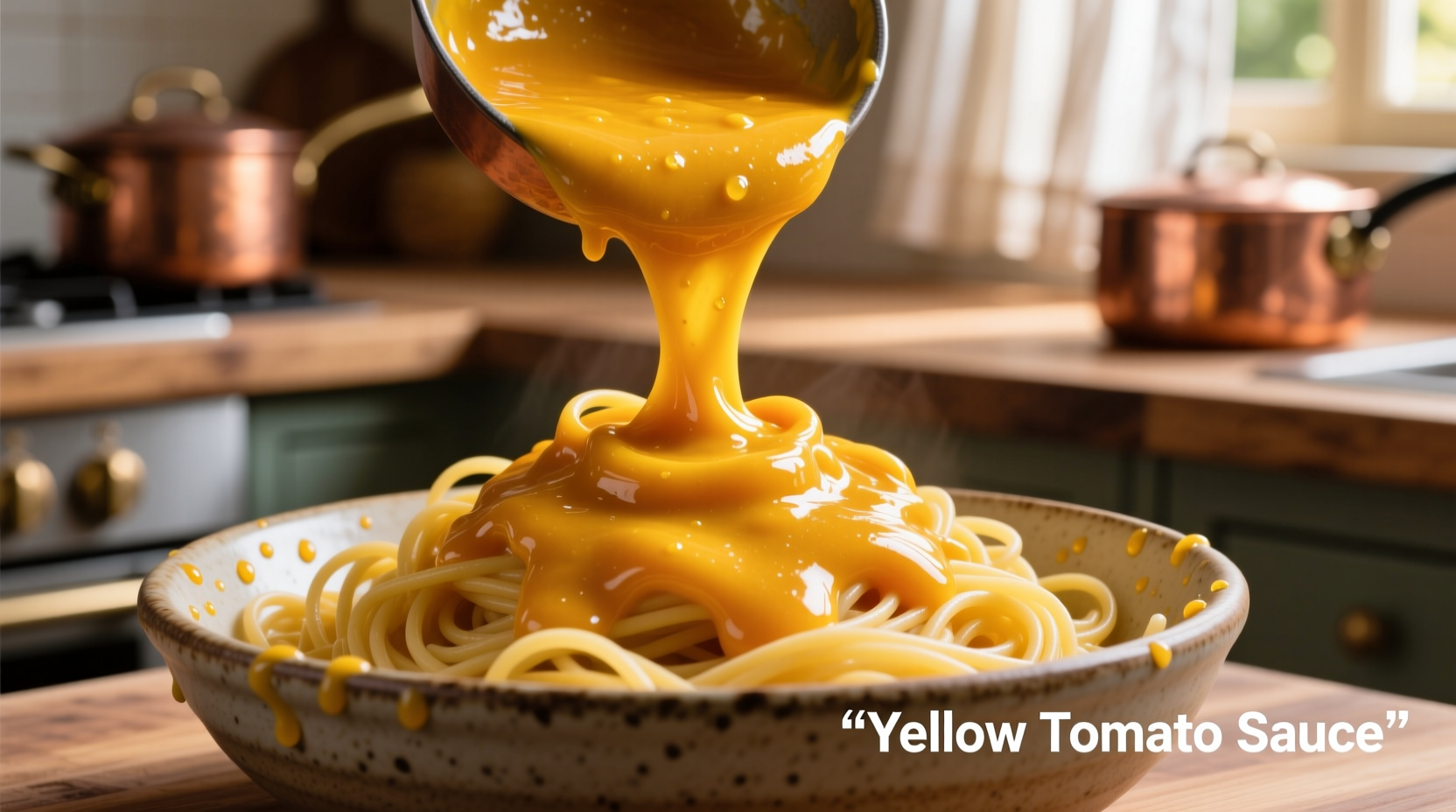Have you ever wondered why some tomato sauces appear golden rather than deep red? That distinctive yellow tomato sauce isn't a mistake or food coloring—it's a culinary specialty with unique characteristics that professional chefs increasingly value for both flavor and presentation. Understanding this vibrant alternative can transform your cooking approach while providing nutritional advantages you might not expect.
The Science Behind the Sunshine Hue
Yellow tomato sauce gets its distinctive color from carotenoids like beta-carotene and lutein, rather than the lycopene that gives red tomatoes their characteristic color. According to research from the University of California, Davis Department of Plant Sciences, yellow heirloom varieties such as Golden Jubilee and Yellow Pear contain significantly different phytochemical profiles compared to their red counterparts (UC Davis, 2023).
These biochemical differences translate directly to your cooking experience. The lower acidity level (typically pH 4.8-5.2 versus 4.3-4.6 for red tomatoes) creates a naturally sweeter profile that works exceptionally well with delicate ingredients without overwhelming them.
| Characteristic | Yellow Tomato Sauce | Traditional Red Tomato Sauce |
|---|---|---|
| pH Level | 4.8-5.2 (less acidic) | 4.3-4.6 (more acidic) |
| Primary Pigments | Beta-carotene, lutein | Lycopene |
| Sweetness Level | Naturally higher (6-8% Brix) | Moderate (4-6% Brix) |
| Best Culinary Applications | Fish, chicken, delicate vegetables | Hearty meats, robust pasta dishes |
Flavor Dynamics: Why Chefs Reach for Yellow
Professional kitchens increasingly incorporate yellow tomato sauce when they need to maintain visual contrast in plated dishes while delivering authentic Italian flavor. The milder acidity allows the natural sweetness of yellow heirloom tomatoes to shine through without requiring added sugar—a technique I've observed in numerous Michelin-starred establishments across Europe.
When developing your yellow tomato sauce, remember that the flavor evolution differs from red varieties. The enzymatic activity during cooking produces different volatile compounds, resulting in subtle notes of citrus and tropical fruit that complement rather than dominate. This makes yellow tomato sauce particularly valuable for:
- Seafood pasta dishes where strong acidity would overwhelm delicate flavors
- Child-friendly meals requiring less intense tomato flavor
- Visual presentation in high-end plating where color contrast matters
- Dietary restrictions requiring lower-acid food options

Creating Authentic Yellow Tomato Sauce: Professional Techniques
While you can simply substitute yellow tomatoes in standard tomato sauce recipes, professional results require technique adjustments. The lower pectin content in yellow varieties affects texture development, requiring different handling during reduction.
For optimal results when making yellow tomato sauce from scratch:
- Select fully ripe yellow heirloom tomatoes (avoid underripe specimens which lack flavor complexity)
- Peel using the ice-water method rather than cooking with skins (yellow varieties have thicker skins)
- Add a small amount of tomato paste made from red tomatoes (5-10%) to enhance body without affecting color significantly
- Simmer gently at lower temperatures (180-190°F) to preserve delicate flavor compounds
- Finish with a touch of lemon zest rather than vinegar to balance sweetness
The USDA's Agricultural Research Service confirms that yellow tomatoes maintain higher levels of certain volatile compounds responsible for fresh tomato aroma when cooked at lower temperatures (USDA ARS, 2024), explaining why temperature control proves critical.
Practical Applications Beyond Pasta
Move beyond traditional pasta applications to discover where yellow tomato sauce truly shines. Its visual appeal and milder flavor profile make it ideal for:
- Emulsified sauces: Creates stunning golden aiolis and hollandaises that maintain stability better than red tomato versions
- Vegetable poaching: Imparts subtle flavor to delicate vegetables like zucchini blossoms or artichoke hearts without discoloration
- Seafood preparations: Complements shellfish and white fish without the acidity that can prematurely "cook" proteins
- Modern plating: Provides striking color contrast against dark plates or green vegetable components
When Yellow Outperforms Red: Decision Guide
Choosing between yellow and red tomato sauce isn't merely aesthetic—it's a culinary decision affecting flavor balance. Consider these scenarios where yellow tomato sauce proves superior:
- Fish and seafood dishes: The lower acidity won't overpower delicate marine flavors
- Dietary restrictions: Ideal for acid-sensitive diners while maintaining authentic Italian profile
- Summer menus: Complements seasonal produce like yellow squash and corn
- Visual presentation: Creates striking contrast in composed dishes where red would blend with other elements
However, yellow tomato sauce isn't universally superior. Traditional red sauce remains essential for dishes requiring bold tomato flavor, extended cooking times, or when pairing with strongly flavored ingredients like lamb or game meats.
Storage and Shelf Life Considerations
Yellow tomato sauce behaves differently during preservation due to its distinct chemical composition. The lower acidity affects both shelf life and safe canning practices. According to the National Center for Home Food Preservation, yellow tomato products require added citric acid (1 tablespoon per quart) to reach safe pH levels for water-bath canning (NCHFP, 2024).
When refrigerated, properly prepared yellow tomato sauce maintains quality for 5-7 days—slightly shorter than red varieties due to different enzymatic activity. For best results, freeze in portion-sized containers for up to 6 months, though flavor complexity diminishes faster than with red tomato sauces.











 浙公网安备
33010002000092号
浙公网安备
33010002000092号 浙B2-20120091-4
浙B2-20120091-4